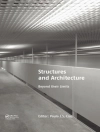The comfort of interior rooms depends on temperature, humidity, and an adequate supply of fresh air. Depending on use and climatic conditions, technical systems of varying complexity are required to achieve it.
Basics Room Conditioning provides a basic understanding of these relationships and uses diagrams to explain the different possible levels of space conditioning – from simple principles of housing construction to totally air-conditioned systems that are fully independent of outside air.
表中的内容
Foreword.- Introduction.- Man as a Warm-Blooded Animal.- Climatic Factors.- Compensation (From Clothing to Sheltering Structures).- Energy-Saving Space Conditioning (General Introduction to Book).- Basics.- Objectives / Comfort (Definitions) / Requirements, Demand.- Design Principles for Energy-Saving Space Conditioning.- Passive and Active Approaches to Meeting Demand.- Active and Passive Approaches to Space Conditioning.- Heating.- Cooling.- Ventilation.- Combinations.- Energy-Optimized Integrated Concepts.- Example 1, Residential Buildings (Passive House Standard).- Example 2, Office Buildings.- Closing Remarks.- Appendix.
关于作者
Oliver Klein und Jörg Schlenger, wissenschaftlicher Mitarbeiter am Lehrstuhl für Klimagerechte Architektur an der Universität Dortmund.












